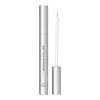What's inside
What's inside
 Key Ingredients
Key Ingredients

 Benefits
Benefits

 Concerns
Concerns

No concerns
 Ingredients Side-by-side
Ingredients Side-by-side

Water
Skin ConditioningButylene Glycol
HumectantHydroxyethylcellulose
Emulsion StabilisingKeratin
Skin ConditioningBiotin
AntiseborrhoeicSodium Hyaluronate
HumectantIsopropyl Cloprostenate
Octapeptide-2
Skin ConditioningAllantoin
Skin ConditioningPanthenol
Skin ConditioningCopper Tripeptide-1
Skin ConditioningPantethine
EmollientSh-Polypeptide-1
Skin ConditioningCucurbita Pepo Seed Extract
Skin ConditioningGlycerin
HumectantSea Water
HumectantMalus Domestica Fruit Cell Culture Extract
Skin ConditioningHydrolyzed Glycosaminoglycans
HumectantPrunus Amygdalus Dulcis Seedcake Extract
Skin ConditioningBackhousia Citriodora Leaf Oil
MaskingDipotassium Glycyrrhizate
HumectantRhizobian Gum
Styrene/Acrylates/Ammonium Methacrylate Copolymer
Xanthan Gum
EmulsifyingPvp
Emulsion StabilisingLecithin
EmollientPEG-12 Dimethicone
Skin ConditioningAlcohol
AntimicrobialChlorphenesin
AntimicrobialPhenoxyethanol
PreservativeSorbic Acid
PreservativeSodium Hydroxide
BufferingWater, Butylene Glycol, Hydroxyethylcellulose, Keratin, Biotin, Sodium Hyaluronate, Isopropyl Cloprostenate, Octapeptide-2, Allantoin, Panthenol, Copper Tripeptide-1, Pantethine, Sh-Polypeptide-1, Cucurbita Pepo Seed Extract, Glycerin, Sea Water, Malus Domestica Fruit Cell Culture Extract, Hydrolyzed Glycosaminoglycans, Prunus Amygdalus Dulcis Seedcake Extract, Backhousia Citriodora Leaf Oil, Dipotassium Glycyrrhizate, Rhizobian Gum, Styrene/Acrylates/Ammonium Methacrylate Copolymer, Xanthan Gum, Pvp, Lecithin, PEG-12 Dimethicone, Alcohol, Chlorphenesin, Phenoxyethanol, Sorbic Acid, Sodium Hydroxide
Ingredients Explained
These ingredients are found in both products.
Ingredients higher up in an ingredient list are typically present in a larger amount.
Biotin is a B vitamin that is naturally produced by our bodies. It is also called Vitamin H.
Our bodies use biotin in the metabolism process. It also helps our bodies use enzymes and move nutrients around. A biotin deficiency can lead to brittle hair and nails.
More research is needed on applying biotin topically. However, taking biotin orally has been shown to help nourish the skin, hair, and nails. They play a role in forming skin-hydrating fatty acids.
Biotin is water-soluble. It can be found in foods such as fish, eggs, dairy, nuts, and meat. Vitamin H stands for "haar" and "haut". These are the German words for hair and skin.
Learn more about BiotinGlycerin is already naturally found in your skin. It helps moisturize and protect your skin.
A study from 2016 found glycerin to be more effective as a humectant than AHAs and hyaluronic acid.
As a humectant, it helps the skin stay hydrated by pulling moisture to your skin. The low molecular weight of glycerin allows it to pull moisture into the deeper layers of your skin.
Hydrated skin improves your skin barrier; Your skin barrier helps protect against irritants and bacteria.
Glycerin has also been found to have antimicrobial and antiviral properties. Due to these properties, glycerin is often used in wound and burn treatments.
In cosmetics, glycerin is usually derived from plants such as soybean or palm. However, it can also be sourced from animals, such as tallow or animal fat.
This ingredient is organic, colorless, odorless, and non-toxic.
Glycerin is the name for this ingredient in American English. British English uses Glycerol/Glycerine.
Learn more about GlycerinOctapeptide-2 is a peptide.
Panthenol is a common ingredient that helps hydrate and soothe the skin. It is found naturally in our skin and hair.
There are two forms of panthenol: D and L.
D-panthenol is also known as dexpanthenol. Most cosmetics use dexpanthenol or a mixture of D and L-panthenol.
Panthenol is famous due to its ability to go deeper into the skin's layers. Using this ingredient has numerous pros (and no cons):
Like hyaluronic acid, panthenol is a humectant. Humectants are able to bind and hold large amounts of water to keep skin hydrated.
This ingredient works well for wound healing. It works by increasing tissue in the wound and helps close open wounds.
Once oxidized, panthenol converts to pantothenic acid. Panthothenic acid is found in all living cells.
This ingredient is also referred to as pro-vitamin B5.
Learn more about PanthenolWater. It's the most common cosmetic ingredient of all. You'll usually see it at the top of ingredient lists, meaning that it makes up the largest part of the product.
So why is it so popular? Water most often acts as a solvent - this means that it helps dissolve other ingredients into the formulation.
You'll also recognize water as that liquid we all need to stay alive. If you see this, drink a glass of water. Stay hydrated!
Learn more about Water